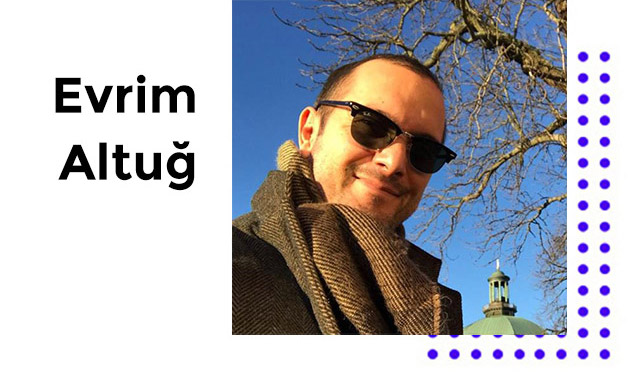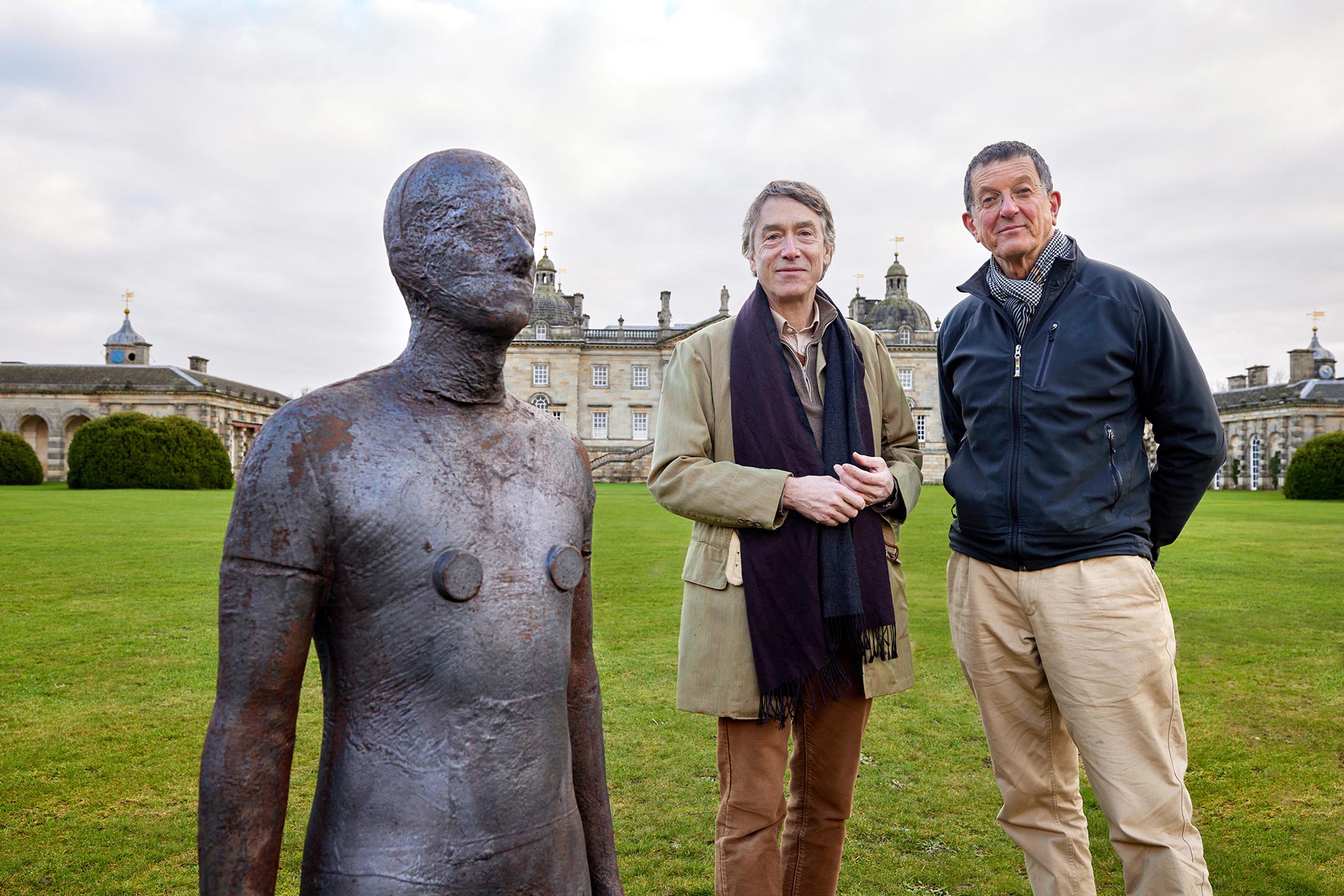
After revealing the Prof. Alan Turing statue in Cambridge on January 22nd, Turner Prize winner Sir Antony Gormley comes up with a new project for the UK. “Time Horizon” places 100 figure sculptures to nature, in an area spanning 300 acres, each with a different posture. “My ambition for this show is that people should roam far and wide. Art has recently privileged the object rather than the experience that objects can initiate. ‘Time Horizon’ isn’t just a painting; it’s a space, and you’re immersed in it.” Gormley’s exhibition “Body Politic” at London’s Bermondsey White Cube last year also attracted significant attention.
Sir Antony Gormley, born in London in 1950, is a globally acclaimed sculptor, installation artist, and designer of public spaces. He relentlessly explores life, nature, and time through his human-inspired creations.
Gormley paid tribute to mathematics professor Alan Turing (also portrayed by Golden Globe and BAFTA-winning actor Russel Crowe in the Oscar-winning blockbuster movie “A Beautiful Mind”) with a 3.7-meter high abstraction-figure, which, as of January 22, 2024, will be on full-time display on the campus of King’s College, University of Cambridge, in honor of the mathematics professor Prof. Alan Turing.
Gormley, now 74, clarified his project as “…memorialization of a death, but about a celebration of the opportunities that a life allowed“, adding that,
“I want this work to be something that the life of the college lives with and that will be a continual source of questioning, of projection, a marker of an elusive relationship to a person and our evolving time.”
From April 21st to October 31st, 2024, Master Gormley will be “sprinkling” his latest large-scale installation “Time Horizon” at the historic Houghton Hall in his native Norfolk, Great Britain.
The project also has the signature of the Houghton Hall Art Foundation, which hosted James Turrell (2015), Richard Long (2017), Damien Hirst (2018), Henry Moore (2019), Anish Kapoor (2020), Tony Cragg (2021), Chris Levine (2021) and Sean Scully (2023) before Gormley.
Sir Gormley’s “Time Horizon” comprises 100 life-size sculptures of figures spread across a 300-acre area, extending approximately two kilometers (1.5 miles) to the Western Junction.

Sir Gormley, whose recent works are currently showcased under the title “Critical Mass” at the Rodin Museum in Paris until March 3, presents his figurative sculptures for “Time Horizon” in Norfolk. Each sculpture weighs 620 kilograms and stands at a height of 2 meters on average, both indoors and outdoors.
For the sake of “horizontal unity across the landscape”, the artist prefers to showcase these latest works to the public in various arrangements: some “buried”, some with only the head visible, and others presented up to the knees or chest, depending on the topography of the region.
Approximately one fourth of these artifacts are positioned on concrete columns, with heights varying from a few centimeters to four meters from the ground.
The artist gives the public and media an explanation of his Norfolk project, which was made possible with contributions from Thaddaeus Ropac and White Cube:
“My ambition for this show is that people should roam far and wide. Art has recently privileged the object rather than the experience that objects can initiate. ‘Time Horizon’ is not a picture, it is a field and you are in it. The work puts the experience of the subject/visitor/protagonist on an equal footing with all material presences, organic and inorganic. The quality of the light, the time of the year, the state of the weather and the condition of your mind, body and soul are all implicated in the field, as is all the evidence within it of human activity already accomplished as well as the plethora of life forms that surround the hall.”

Last year, Gormley’s “Living Time” retrospective, which summarized his 40 years of work, captivated the TAG Contemporary Art Center in China’s Quindao province. Gormley, who received the title of “Knight – Sir” from Queen Elizabeth II with the New Year’s list in 2014, donated works to the auction organized by the Royal Academy in London in favor of Ukraine last year, together with Tracey Emin, one of the stars of British contemporary art, and a Turner Prize winner like himself. Gormley has also been a Fellow of the Royal Academy since 2003.
Antony Gormley, who will showcase his exhibition “Body Politic” at London’s White Cube until January 28th, is renowned for his solo exhibitions across the globe, including in the USA, Austria, Belgium, the Netherlands, Italy, South Korea, the Czech Republic, and Greece. Additionally, his site-specific installations in countries such as Japan and Norway are noteworthy.
Among these series, it’s important to mention the artist’s works including “Field of The British Isles” (2015), “Location” (2015), “Another Time” (2015), and “Sum” (2018), along with other “Field” presentations. Additionally, his notable site-specific installation in 2019 at the ancient site on the Greek island of Delos deserves emphasis.
Antony Gormley tirelessly engages as an artist, inviting audiences to experience the distinct supra-rational essence of existence through bodies, nature, and spaces. His works often juxtapose or integrate these elements, exploring various concrete and abstract dimensions of time, angle, and distance. This must be why Gormley’s works can be likened to a mortal pen, a relentless scribe thirsting for the depiction of the “true”, yet never content with a solitary image.

The sensory and psychological communication between form and matter, in the flow of space and time, in the ebb and flow of past and future, or the sensory and psychological communication that humans are exposed to in the natural flow, becomes the research field of almost all of the artist’s works and feeds these ‘social’ and ‘aesthetic’ propositions one after the other. Gormley’s works unfold across all stages of exhibition, resembling a thesis in philosophy, architecture, industrial engineering, and archaeology simultaneously.
With each surprising work, Gormley reassesses the coefficient of ownership, blending elements of the ancient, the modern, the vulnerable, and the defensive on the shifting fault line of history and civilization. The artist exposes the psychological dominance of the body over the delicate soul, illustrating the diverse ideological influences that cultural figures, those which are deemed as “icons”, or “precedents” ‘exert’ as metaphysical role models on individuals. With each new series, the sculptor unleashes a disruptive and anarchic array of questions concerning light, perspective, freedom of perception and interpretation, as well as fundamental social issues related to poverty and wealth.
Gormley’s sculptures, depicting voluntary exile to nature, appear to anticipate the initial move of a colossal game of self-interest, utilizing the world as an everlasting playground. Each work seems to await something from the viewer, carrying the weight of its silence with every encounter. Some sculptures have already claimed territories you’ve yet to explore, while others surprise you from within.
For instance, concepts such as earthquake, landslide, discovery, cargo, detention, emptiness, heritage, action, relic, architecture, eternity, existence, death, locality, portability, forgetting, habit, loneliness, resistance, rooting, and rootlessness rush to the viewer’s mind as just a few of the myriad concepts or situations conveyed by the artist’s works.
In an interview with Nancy Durrant of The Standard newspaper on November 21, 2023, regarding the exhibition “Body Politic” at London’s White Cube gallery in Bermondsey, which he presented with metal blocks stacked almost like a “bunker”, Gormley cautions that we are facing ‘extreme times’, underlining the following about how we arrived at this juncture:

“All of those promises from the mid 90s, when we thought that, through the web, we were going to in some way become more united in making a better and more equitable future, seems to have disappeared and nationalism, identity politics, and the rise of dictatorship have all happened at the same time.”
In this exhibition, Gormley introduces another work titled “Resting Place,” which delves into “the other side of human nature.” The artist elucidates this situation in these remarkable words to journalist Durrant:
“On the one hand, we want protection and security, on the other, we want to roam. That migrator instinct has been so much a part of our species’ history. And yet, we’ve arrived at a value system where we’re perfectly happy for goods and money to cross borders. But not bodies.”
Sir Antony Gormley’s works, in a sense, continually confront us with the flux of God, existence, and understanding, evoking the human experience of being “exiled” to the world. In this respect, the works bring to mind the words of the ancient Greek Sophist philosopher Protagoras: “Man is the measure of all things: of the things that are, that they are, of the things that are not, that they are not.”
Gormley’s works draw their strength and sincerity from the apocalyptic “general perspective” of this unbalanced state of nature, inflicted harshly by humanity—often portrayed as victimized but already victimizing itself.
– Info: anthonygormley.com


